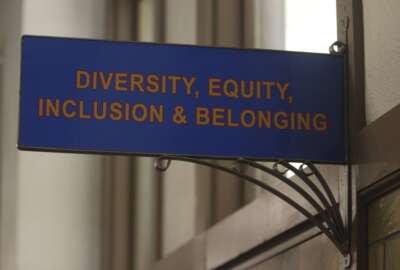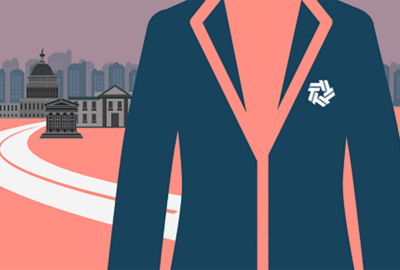USPS: We will default on $5.5B payment due this week
The U.S. Postal Service is bracing for a first-ever default on billions in payments due to the Treasury, adding to widening uncertainty about the mail agency's...
wfedstaff | April 17, 2015 4:00 pm
By HOPE YEN
Associated Press
WASHINGTON (AP) – The U.S. Postal Service is bracing for a first-ever default on billions in payments due to the Treasury, adding to widening uncertainty about the mail agency’s solvency as first-class letters plummet and Congress deadlocks on ways to stem the red ink.
With cash running perilously low, two legally required payments for future postal retirees’ health benefits — $5.5 billion due Wednesday, and another $5.6 billion due in September — will be left unpaid, the mail agency said Monday. Postal officials said they also are studying whether they may need to delay other obligations. In the coming months, a $1.5 billion payment is due to the Labor Department for workers compensation, which for now it expects to make, as well as millions in interest payments to the Treasury.
USPS: No effect on day-to-day operations
The defaults won’t stir any kind of catastrophe in day-to-day mail service. Post offices will stay open, mail trucks will run, employees will get paid, current retirees will get health benefits.
But a growing chorus of analysts, labor unions and business customers are troubled by continuing losses that point to deeper, longer-term financial damage, as the mail agency finds it increasingly preoccupied with staving off immediate bankruptcy while Congress delays on a postal overhaul bill.
Postmaster General Patrick Donahoe has described a "crisis of confidence" amid the mounting red ink that could lead even once-loyal customers to abandon use of the mail.
Banks are promoting electronic payments, citing in part the growing uncertainty of postal mail. The federal government will stop mailing paper checks starting next year for millions of people who receive Social Security and other benefits, paying via direct deposit or debit cards instead.
First-class mail volume, which has fallen 25 percent since 2006, is projected to drop another 30 percent by 2016.
Art Sackler, co-coordinator of the Coalition for a 21st Century Postal Service, a group representing the private-sector mailing industry, said the payment defaults couldn’t come at a worse time, as many major and mid-sized mailers are preparing their budgets for next year.
"The impact of the postal default may not be seen by the public, but it will be felt by the business community," he said. "Mailers will be increasingly wary about the stability of the Postal Service. The logical and likely move would be to divert more mail out of the system."
The Postal Service, an independent agency of government, does not receive taxpayer money for operations but it is subject to congressional control. It estimates that it is now losing $25 million a day, which includes projected savings it had expected to be accruing by now if Congress this spring had approved its five-year profitability plan. That plan would cut Saturday delivery, reduce low-volume postal facilities and end its obligation to pay more than $5 billion each year for future retiree health payments.
Postal reform bill stalled in Congress
While the Senate passed a bill in April that provides an $11 billion cash infusion to help the mail agency avert a default, it also would delay many of the planned postal cuts for another year or two. The House remains stalled over a measure that allows the aggressive cuts the Postal Service prefers; that’s unlikely to move forward this year, partly due to concerns among rural lawmakers over cutbacks in their communities.
The Postal Service originally sought to close low-revenue post offices in rural areas to save money but after public opposition agreed to keep 13,000 open with shorter operating hours. The Postal Service also is delaying the closing of many mail processing centers, originally set to begin this spring. The estimated annual savings of $2.1 billion won’t be realized until the full cuts are completed in late 2014.
The Postal Service, which releases third-quarter financial results next week, has projected a record $14.1 billion loss for the year. It expects to avoid bankruptcy in October only by defaulting on the two health prepayments, totaling $11.1 billion. It faces a cash crunch again next year.
Fredric Rolando, president of the National Association of Letter Carriers, notes that the onerous health payment for future retirees — something not required of any other government agency or private business — is to blame for much of the post office’s red ink. He faults Congress for mandating the payments in 2006, saying they force the post office every year into a "panic mode that absorbs energy and resources" rather than focusing on longer-term innovation.
"The word `default’ sounds ominous, but in reality this is a default on the part of Congress," Rolando said.
In 2007 and 2008, the Postal Service initially had profits of roughly $3 billion but fell into the red after making the health payments. In more recent years, it has suffered annual losses of $2 billion to $5 billion even after factoring out the health payments; by 2016, the mail agency expects to lose $21.3 billion a year, of which $5.8 billion will be caused by that payment.
“The default by the Postal Service on its obligation to its own employees and retirees follows decades of mismanagement and a willful blindness to fundamental changes in America’s use of mail,” Rep. Darrell Issa (R-Calif.), the chairman of the House Oversight and Government Reform Committee said in a statement. “The Postal Service continues to fail to do all it can under current law to cut costs.”
Issa has introduced postal reform legislation in the House.
IG: The Postal Service will run out of cash
The Postal Service warned of its likely default on the prefunding mandate on the same day its inspector general said the agency is on track to run out of cash for expenses in October. The report confirmed projections by USPS leadership.
“The Postal Service projects an estimated $100 million cash shortfall on October 15, 2012, with a slow increase in liquidity from October through December 2012,” inspector general David Williams wrote in a memo to the postmaster general. “Liquidity risks and shortfalls are projected to return in spring 2013 through October 2013, with the Postal Service projecting an estimated $1.2 billion cash shortfall in mid-October 2013.”
Peter Nesvold, a financial analyst with Jefferies and Co., says the post office’s financial future will depend on how Congress resolves its conflict over the mail agency’s core mission. While the Postal Service is a business expected to stay afloat, it also has a legal obligation to provide uniform first-class mail service even to sparsely populated, far-flung areas of the U.S., all for the same price of a 45-cent postage stamp. UPS and FedEx don’t deliver to those areas that are less profitable, contracting with the Postal Service to get the job done.
Last year, first-class mail contributed to 49 percent of the Postal Service’s total revenue; by 2016, that share will drop to 41 percent. The mail agency has been seeking to pick up the slack by promoting its fast-growing package business as a cheaper alternative to FedEx and UPS, as well as encouraging more use of "standard mail," which are advertising circulars and catalogs often referred to as "junk mail."
(Federal News Radio reporter Ruben Gomez and intern Esther Carey contributed to this report)
Associated Press writers Robert Ray in Lawrence, Mich., and Mark Thiessen in Hope, Alaska, contributed to this report.
(Copyright 2012 The Associated Press. All rights reserved. This material may not be published, broadcast, rewritten or redistributed.)
Copyright © 2025 Federal News Network. All rights reserved. This website is not intended for users located within the European Economic Area.





